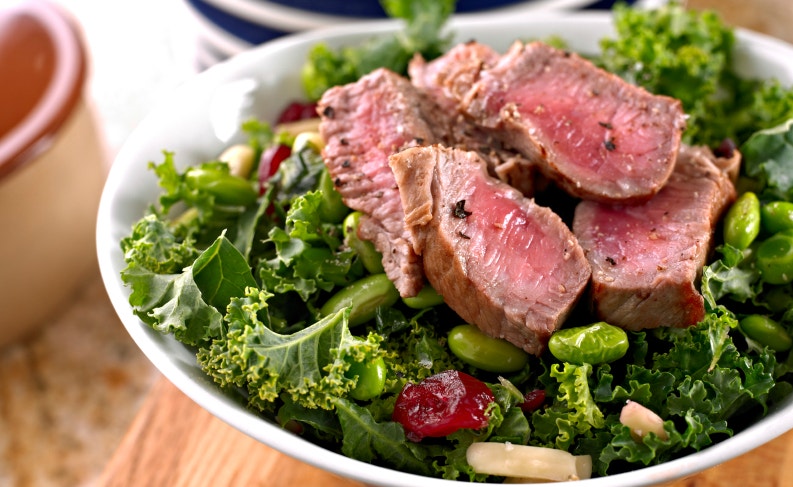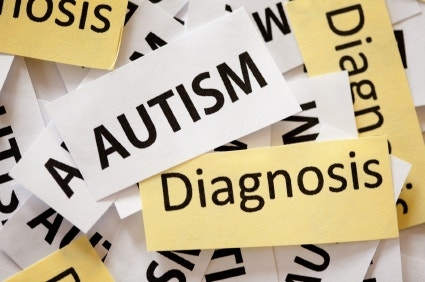The Paleo diet has been touted as a healthy way to prevent chronic disease, increase energy and lose weight. Experts agree nixing refined carbs and processed foods and eating whole foods is always a good idea and can help you lose weight, but there are other areas where the diet may fall short. Whether you’re a Paleo beginner or long-term devotee, let’s separate fact from fiction on some commonly held Paleo diet beliefs.
1. The Paleo diet is how the cavemen ate.
Paleo includes whole foods that our ancestors were eating, but because our food supply is so different it’s definitely not the same.
“Most of the meat that’s available in the grocery store and restaurants is grain-fed and inflammatory whereas our Paleo ancestors ate wild game which is anti-inflammatory,” said Dr. Sarah Gottfried, author of the New York Times bestseller “The Hormone Cure.”
Today’s meat is also filled with hormones.
“Hormones dictate what your body does with food so if you’re screwing up your hormones with conventional meat, it can cause a lot of problems,” she said.
Verify that your meat is 100 percent grass-fed and organic, since many are “grain-finished,” meaning the cows are fed grain 90 days before they’re slaughtered.
2. A little more healthy fat is okay for cholesterol
According to U.S. News and World Report, a typical Paleo plan includes 39 percent of daily calories from fat, more than the 35 percent the USDA recommends. Although too much saturated fat is linked to high cholesterol, a study in the European Journal of Clinical Nutrition found that people on Paleo significantly reduced their LDL or “bad” cholesterol.
Nevertheless, it’s a good idea to emphasize healthy fats in your diet. Lean cuts of meat, as well as fish, coconut oil and nuts are all good choices, said Jim White, a registered dietitian, spokesperson for the American Academy of Nutrition and Dietetics (AND) and owner of Jim White Fitness & Nutrition Studios.
3. You don’t need dairy for calcium.
The Paleo diet skips on dairy products, which may cut out important calcium from your diet. You can get enough calcium and vitamin D from other food sources but it’s much harder, White said. You can eat a lot of almonds but the calories can add up quickly. Green leafy vegetables are great sources too but most people in the general population [are not eating enough, he said .
By eliminating dairy as a whole, Paleo diet eaters are going to have a lot more osteoporosis and vitamin D deficiencies later in life, he said.
4. You’ll get all the nutrition you need by eating Paleo.
Paleo experts believe that a diet that includes only whole foods that our ancestors ate helps to control weight and prevent disease.
Yet cutting legumes, beans and nuts can deplete you of necessary fiber, protein, iron and B vitamins. Plus, if you’re cutting out all grains you could be missing out on many vital nutrients that can prevent heart disease and cancer, White said.
5. Cutting carbs will help you lose weight.
When women nix carbs, it can lead to weight gain or stall weight loss, and exacerbate hormone problems, Gottfried said.
For starters, it can worsen hypothyroidism, which disrupts the body’s normal chemical reactions. It can raise cortisol and in women who have adrenal dysregulation, they may not have enough energy. This is either because of the cortisol or because they may need a certain amount of carbohydrates for their adrenal glands to function well, Gottfried said.
For healthy women on Paleo, it’s common for their weight loss to plateau and for some, they may even stop menstruating, Gottfried said.
Make sure to get enough fiber with two to three servings of vegetables at every meal and speak with your doctor to make sure Paleo is right for you and your health.
6. Paleo gives you plenty of energy.
The protein on Paleo will keep you feeling satisfied, but without a lot of carbs, you can feel tired. B vitamins, which are found in whole grains, are important for releasing energy from food. Since many of the B vitamins help to regulate metabolism, without enough your body can’t break down carbohydrates, fats, and proteins and give you the energy you need, White said.
“Your brain requires 90 percent carbohydrates—they fuel the brain,” White said. Without enough B vitamins in your diet, you could have low energy, memory problems and even depression.
Going low carb can also be problematic for serious athletes like CrossFit enthusiasts, for example. Carbohydrates are important for storing and releasing the energy needed for high-intensity workouts.
“Without proper energy from a balanced diet, injury can occur from being fatigued,” White said.
7. Only whole foods are allowed.
Sure, you’re not eating potato chips, but vegetables are can also be processed, like packaged the packaged, frozen kind. White rice is another processed pick that some say is allowed on a Paleo diet but that White notes isn’t the best choice.
“It’s stripped of a lot of its nutrients and it’s refined,” White said.
8. Paleo prevents disease.
Although eating whole foods including plenty of fruits and vegetables has been shown to prevent chronic disease, the jury is still out on whether or not a Paleo diet alone can do so, White said.
9. You can eat dessert and still lose weight.
Sure almond flour has more nutrients that all-purpose white flour. And coconut oil might be better than butter because it has antioxidant properties and it may improve HDL cholesterol and prevent heart disease Yet eating Paleo-approved desserts won’t do anything for your waistline.
“Maybe you’ve upgraded the food ingredients a little, but [dessert] is not what our ancestors were eating,” Gottfried said.
So Paleo-approved or not, these treats still have calories, fat, and sugar that can pack on the pounds.
10. Paleo is not a diet.
For some people who follow Paleo, it’s not another fad diet or quick attempt to lose weight. They believe it’s how our bodies are meant to eat and should be a way of life.
However, it may be unmanageable in the long term.
“Most people on these meal plans have a hard time staying on them for a lifetime because it’s hard to stay on something that’s as restrictive as this,” White said.
“Restrictive behavior becomes a mental game— forcing yourself to eat a certain way, labeling foods as good or bad, and feeling guilty if you fall off the ‘plan,’ ” he said.
A better approach? Be flexible. Avoid refined carbohydrates and processed foods, but consider adding quinoa, brown rice and sweet potatoes, for example, White said.
“A slow and steady diet that allows you to lose about 10 percent body weight in six months is healthier,” White said.










Leave a Reply